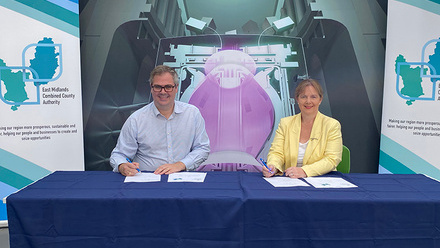Within REACH - training requirements for users of polyurethane adhesives
REACH training and certification requirements for users of diisocyanates is now compulsory, impacting the use of many polyurethane adhesives. Peter Swanson, Managing Director of Intertronics, explains how manufacturers can best prepare for this change.

Following a review by the European Parliament, on 4 August 2020, the REACH Restriction on aliphatic and aromatic diisocyanates was published and became effective on 24 August 2020. The restriction aims to minimise the adverse health effects induced by exposure to diisocyanates in the workplace (including respiratory sensitisation and occupational asthma), and along the entire supply chain.
Polyurethane (PU) adhesives are popular in manufacturing and industrial applications as they offer good performance characteristics when bonding a range of substrates. They are extremely tough, have high peel strength, offer good environmental resistance and are suitable for gap filling. They offer commercial and process benefits too, in that they are relatively fast cure, which helps increase productivity and reduce work in progress, while being reasonably low cost.
PU products, including adhesives and potting compounds, are made by reacting diisocyanates and polyols. Diisocyanates are highly reactive – one of the reasons it is possible to have fast-curing PU adhesives. However, this reactivity also means that care must be taken to prevent diisocyanates causing health effects to the people who handle them.
Like any chemical or substance, diisocyanates are safe when they are handled according to the relevant health and safety, and risk management measures. Diisocyanates are only used as reactive constituents – they react with the polyol to form the PU product and are used up during the reaction. Virtually no diisocyanates can be found in completed or cured materials.
As of 24 August 2023, in the UK and EU, training is required for all professional and industrial users of PU adhesives and sealant products with a total monomeric diisocyanate concentration of >0.1%. All staff who come into contact with a substance containing diisocyanates must be trained and certified ahead of this date, and employers have a responsibility to provide this.
Training programmes are available online in several languages and are typically either free or low cost. The Association of the European Adhesive & Sealant Industry has committed to financial support for the training of member organisations and their clients, and has shared a voucher code that makes training material related to PU adhesives and sealants applications free of charge for end-users.
Alongside providing the training, employers will be required to collect evidence of its successful completion. Training certificates are valid for five years, after which they need to be renewed.
The cost, administrative and time burden on industrial users of PU adhesives as a result of the new requirement for mandated REACH training and certification could be significant. To help, there are new, leading-edge PU adhesives available based on micro-emission technology. These materials have a concentration of monomeric diisocyanates of less than 0.1% by weight, so training is not required if a manufacturer specifies such products.
Industrial users of PUs have two options – train their team, or opt for materials that require no training. Both approaches enable safe and productive processes for manufacturers using PU adhesives.







